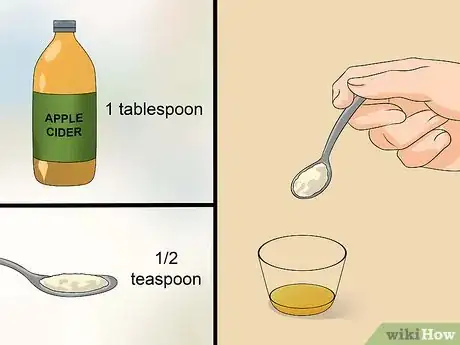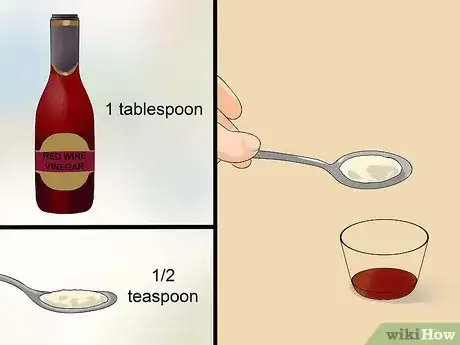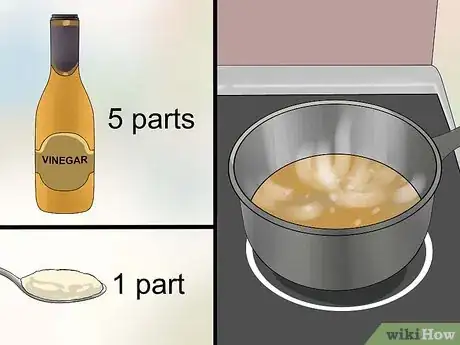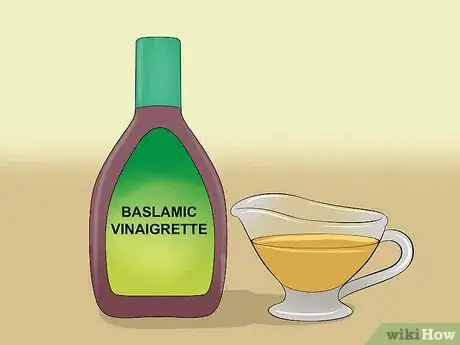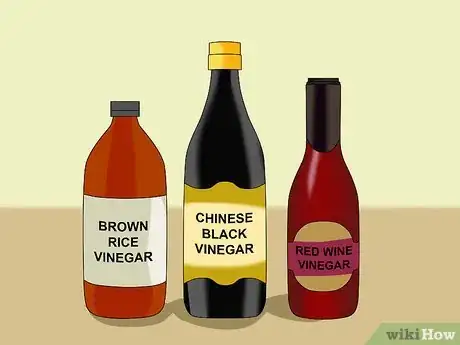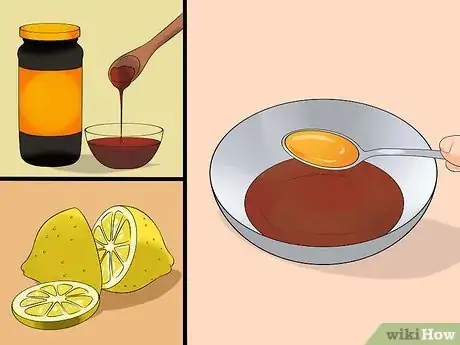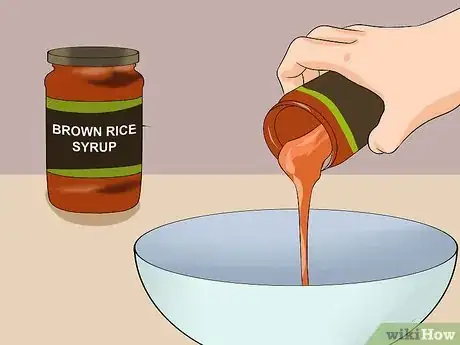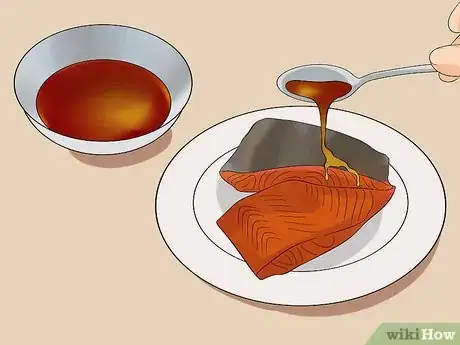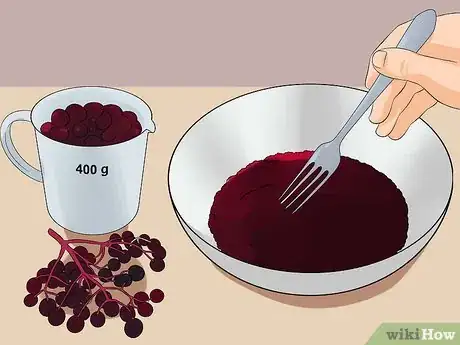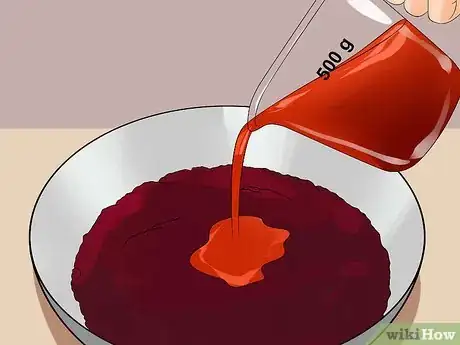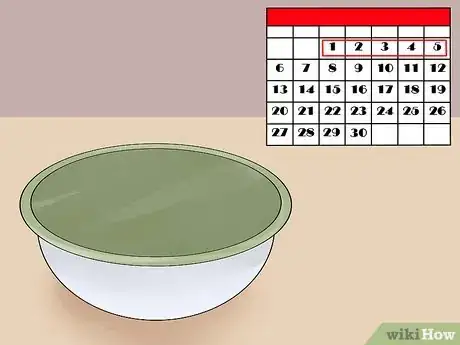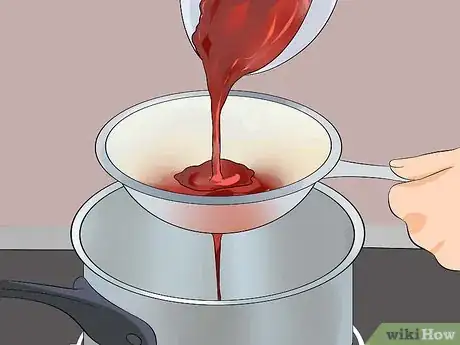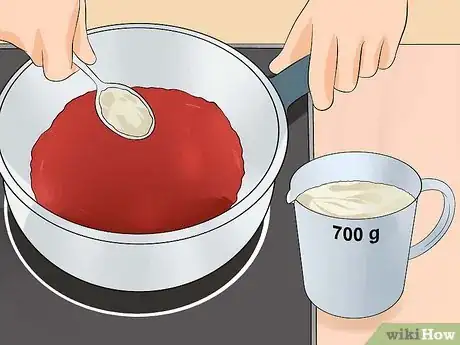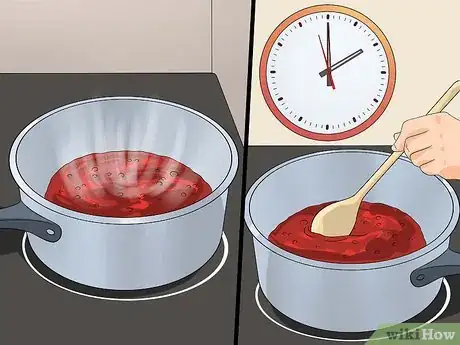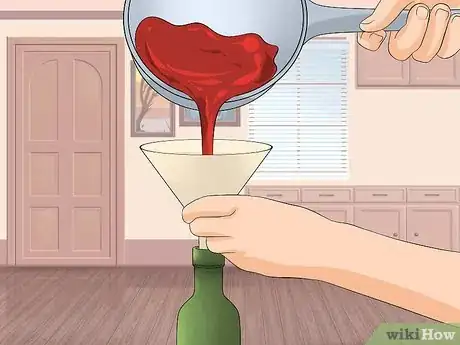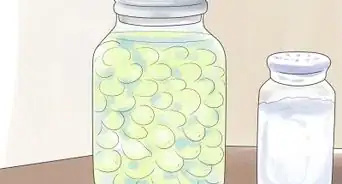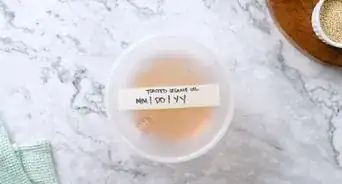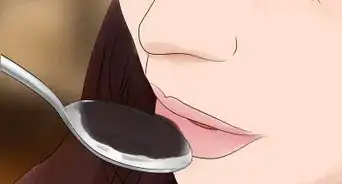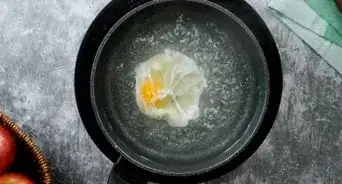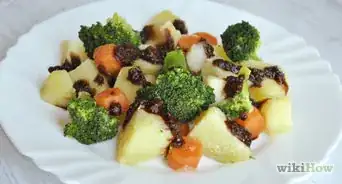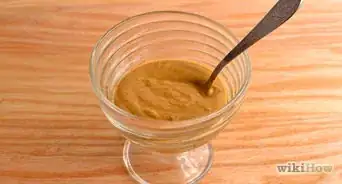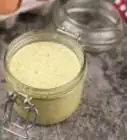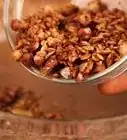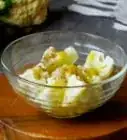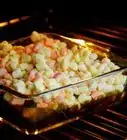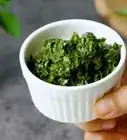This article was co-authored by Sasha Reyes. Chef Sasha Reyes is the Executive Chef and Owner of Artisan Personal Chefs. With over 20 years of food industry experience, she specializes in private dinner parties, custom sports nutrition plans for professional athletes, and cooking lessons. Chef Reyes graduated from Arizona Culinary Institute in 2011 with a degree in Culinary Arts, Baking, and Restaurant Management.
This article has been viewed 196,811 times.
Balsamic vinegar has a unique taste, but it's not something you might have readily available. If you don't have balsamic vinegar on hand, you could try use a substitute instead. This article will give you a few substitutes that have a similar taste. It will also show you how to mix up your own vinegar to get something that tastes similar.
Ingredients
- 1 part molasses or brown rice syrup
- 1 part lemon juice
- Dash soy sauce
- 400 grams (4 cups) ripe Elderberries
- 500 milliliters (2 cups) organic red wine vinegar
- 700 grams (3 cups) organic cane sugar
Steps
Using What You Have
-
1Know that balsamic vinegar has a unique taste. There is no true substitute for it. You may be able to find or mix something together that tastes similar, but you won't be able to get the exact same taste. This section will give you a few items that have a similar taste. Choose the one that appeals the most to you.
-
2Combine 1 tablespoon of apple cider vinegar and ½ teaspoon of sugar in a small cup. Keep stirring until the sugar dissolves. You can also heat the mixture in a small pot to help the sugar dissolve. Allow the vinegar to cool completely before you use it in your recipe.[2]Advertisement
-
3Mix 1 tablespoon of red wine vinegar with ½ teaspoon of sugar in a small cup. Keep mixing until the sugar dissolves. You can also heat the mixture in a small pot until the sugar melts. Let the vinegar cool before you use it.[3]
-
4Use five parts vinegar to one part sugar. Any type of vinegar will do. Heat the two ingredients in a small pot to dissolve the sugar. Let the vinegar cool before using it in your recipe.
- Chinese black vinegar will work well.
- Fruity vinegar will also work. Try any of the following: apple cider, pomegranate, or raspberry.
-
5Try a balsamic vinaigrette instead. It may have additional ingredients, such as oils, herbs, and sugars, but it will have the same basic taste. If you are making a salad dressing using balsamic vinegar, you can use the vinaigrette instead of your recipe.
-
6
Making a Balsamic Vinegar Substitute
-
1Mix equal parts of lemon juice and molasses in a small bowl. If you can't find any molasses, use brown rice syrup instead. Mix just enough for the recipe. For example, if your recipe calls for 2 teaspoons of balsamic vinegar, use 1 teaspoon of lemon juice and 1 teaspoon of molasses.
-
2Add a dash of soy sauce. Stir everything together with a fork.
-
3Make any adjustments, if needed. Give your substitute a taste. If it tastes too sour, add some more molasses or brown rice syrup. If it is too sweet, add more lemon juice.
-
4Add the mixture to your recipe in place of the balsamic vinegar.
Making Elderberry Balsamic Vinegar
-
1Grind 400 grams (4 cups) of ripe elderberries in a bowl. Use a fork, the end of a rolling pin, or even the back of a spoon to do this. You want to break the skin and expose the flesh and juice.
-
2Pour 500 milliliters (2 cups) of red wine vinegar over the elderberries. Make sure that the berries are completely covered.
-
3Cover the bowl and leave it alone for five days. Keep the bowl in a cool place where it will not be disturbed. If it is warm in the room, move it to the fridge.
-
4Pour the mixture through a sieve into a saucepan. Mash the berries against the sieve to get any excess juice and vinegar out. Once you are done, toss the berries.
-
5Stir in 700 grams (3 cups) of sugar and heat the mixture over medium heat. Keep stirring until the sugar dissolves.
-
6Bring the mixture to a boil, then simmer it for 10 minutes. As soon as the vinegar starts to boil, reduce the heat to a simmer. Stir the mixture often with a spoon. If you don't, the sugar may scorch or caramelize.
-
7Pour the mixture into a dark colored bottle. Use a funnel to help guide the mixture into the bottle. The bottle must be dark colored, or the vinegar will go bad.
- Try getting a dark blue or green bottle.
-
8Cap the bottle and store it in a cool, dry place. Use a cork or a plastic-topped cap. The vinegar may corrode other materials.
Expert Q&A
-
QuestionAre red wine vinegar and balsamic interchangeable?
 Sasha ReyesChef Sasha Reyes is the Executive Chef and Owner of Artisan Personal Chefs. With over 20 years of food industry experience, she specializes in private dinner parties, custom sports nutrition plans for professional athletes, and cooking lessons. Chef Reyes graduated from Arizona Culinary Institute in 2011 with a degree in Culinary Arts, Baking, and Restaurant Management.
Sasha ReyesChef Sasha Reyes is the Executive Chef and Owner of Artisan Personal Chefs. With over 20 years of food industry experience, she specializes in private dinner parties, custom sports nutrition plans for professional athletes, and cooking lessons. Chef Reyes graduated from Arizona Culinary Institute in 2011 with a degree in Culinary Arts, Baking, and Restaurant Management.
Executive Chef They aren't really interchangeable. The red wine vinegar is not going to have exactly the same type of flavor, but it's going to contribute the correct amount of acidity to a recipe. It's going to give you that flavor profile, even though it's not exactly the same flavor as balsamic.
They aren't really interchangeable. The red wine vinegar is not going to have exactly the same type of flavor, but it's going to contribute the correct amount of acidity to a recipe. It's going to give you that flavor profile, even though it's not exactly the same flavor as balsamic. -
QuestionMy recipe called for 1/2 cup of balsamic vinaigrette, but all I have is balsamic vinegar. Can I use the vinegar instead of the vinaigrette?
 Community AnswerYou can! Just know that vinegar is stronger than vinaigrette, so if you're using it as a condiment (for instance on a salad or in a dressing), you might want to half the amount you're putting in.
Community AnswerYou can! Just know that vinegar is stronger than vinaigrette, so if you're using it as a condiment (for instance on a salad or in a dressing), you might want to half the amount you're putting in.
Things You'll Need
Making a Substitute
- Mixing bowl
- Mixing spoon
- Recipe
Making Elderberry Vinegar
- Small saucepan
- Sieve
- Stove
- Funnel
- Dark colored bottle
Expert Interview
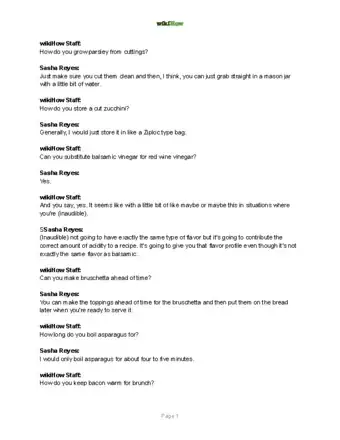
Thanks for reading our article! If you'd like to learn more about cooking tips, check out our in-depth interview with Sasha Reyes.
References
- ↑ Eat Weeds, Elderberry Balsamic Vinegar
- ↑ Better Homes and Gardens, Vinegar Substitutes
- ↑ Better Homes and Gardens, Vinegar Substitutes
- ↑ Gourmet Sleuth, Balsamic Vinegar
- ↑ Eat by Date, Vinegar Substitutes
About This Article
The best way to make a substitute for balsamic vinegar depends on what you have on-hand. Try mixing 1 tablespoon of apple cider vinegar or red wine vinegar with 1 tsp of sugar. If you have a different type of vinegar, heat 5 parts vinegar and 1 part sugar in a small pot until the sugar dissolves. You can also try to make a substitute of equal parts lemon juice and molasses with a dash of soy sauce. For more advice, including when to use balsamic vinaigrette instead of balsamic vinegar, scroll down!

